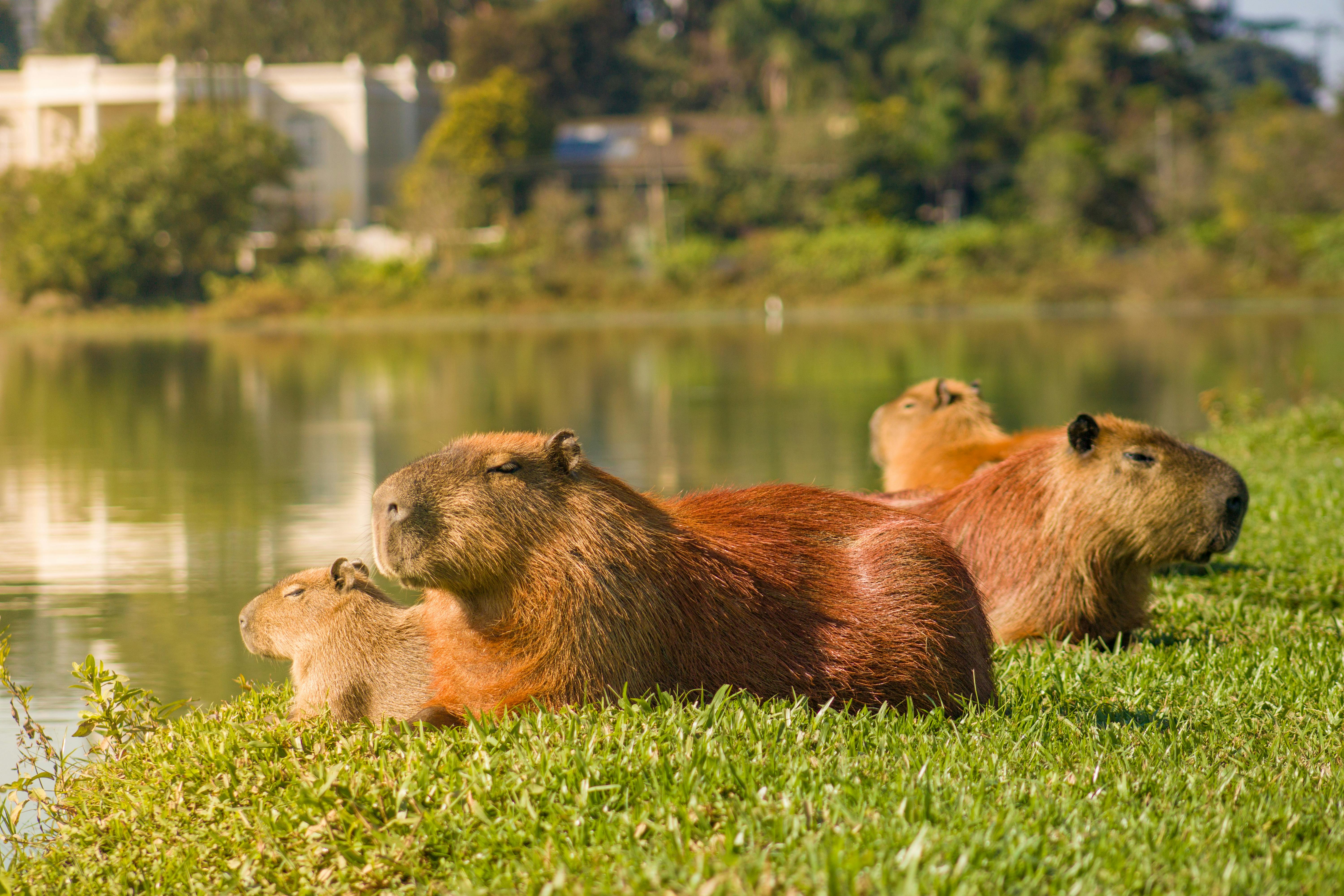The Curious World of Capybaras: Nature's Gentle Giants
Imagine a world where the largest rodent on Earth is also one of the most laid-back and sociable creatures you'll ever encounter. Welcome to the fascinating realm of capybaras, the gentle giants of the animal kingdom that are capturing hearts worldwide with their unique charm and surprising adaptability.

Masters of Adaptation
One of the most intriguing aspects of capybaras is their remarkable adaptability. These versatile creatures are equally at home on land and in water, thanks to their unique physical characteristics. Their partially webbed feet and eyes, ears, and nostrils positioned high on their heads allow them to navigate aquatic environments with ease. Capybaras can remain submerged for up to five minutes, making them adept at evading predators and foraging for aquatic plants.
Social Butterflies of the Animal Kingdom
Perhaps the most endearing quality of capybaras is their highly social nature. These animals live in large groups, often numbering 10 to 20 individuals, but sometimes forming herds of up to 100 members during the dry season. This social structure not only provides safety in numbers but also allows for complex social interactions and hierarchies within the group. Capybaras communicate through a variety of vocalizations, including barks, whistles, and purrs, as well as scent marking and body language.
Unexpected Interspecies Friendships
One of the most surprising aspects of capybara behavior is their apparent ability to form friendships with a wide range of other animals. From birds using them as perches to monkeys grooming them, capybaras seem to have a special talent for interspecies bonding. This unique characteristic has led to numerous viral videos and images of capybaras peacefully coexisting with animals as diverse as crocodiles, deer, and even house cats. While scientists are still studying the reasons behind this behavior, it’s clear that capybaras have a special place in the animal kingdom as nature’s ultimate peace-makers.
The Capybara Craze: From Rainforest to Social Media Sensation
In recent years, capybaras have experienced a surge in popularity, becoming unexpected stars of social media platforms like Instagram and TikTok. Their laid-back demeanor and seemingly perpetual state of relaxation have earned them the nickname chillest animal on Earth. This newfound fame has led to an increased interest in capybaras as exotic pets, despite the significant challenges and legal restrictions associated with their care.
Conservation Concerns in a Changing World
While capybaras are not currently considered endangered, their populations face various threats due to habitat loss, hunting, and climate change. As human populations expand in South America, capybara habitats are increasingly fragmented or destroyed. Additionally, in some regions, capybaras are hunted for their meat and leather, leading to local population declines. Conservation efforts are underway to protect these unique animals and their ecosystems, but more research and action are needed to ensure their long-term survival.
The Capybara’s Role in Ecosystem Health
Capybaras play a crucial role in maintaining the health of their native ecosystems. As herbivores, they help control plant growth and disperse seeds through their droppings. Their grazing habits can shape the landscape and create habitats for other species. Moreover, capybaras serve as prey for various predators, including jaguars, anacondas, and caimans, making them an essential link in the food chain of South American wetlands and grasslands.
Capybaras in Human Culture
Throughout history, capybaras have held a significant place in the cultures of many South American indigenous peoples. They have been featured in folklore, art, and traditional medicine. In some regions, capybaras are considered a valuable food source, particularly during Lent, as the Catholic Church has historically classified them as fish due to their semi-aquatic nature. This unique cultural significance adds another layer to the complex relationship between humans and these remarkable rodents.
The Future of Capybara Research and Conservation
As interest in capybaras grows, so does the need for comprehensive research and conservation efforts. Scientists are exploring various aspects of capybara biology, behavior, and ecology to better understand these animals and their role in the ecosystem. Current research focuses on topics such as their social structure, communication methods, and adaptations to changing environments. Conservation initiatives aim to protect capybara habitats, promote sustainable coexistence with human populations, and raise awareness about the importance of preserving these unique creatures for future generations.
In conclusion, capybaras represent a fascinating example of nature’s diversity and adaptability. From their impressive size to their social nature and unexpected interspecies friendships, these gentle giants continue to captivate and surprise us. As we learn more about capybaras, it becomes increasingly clear that they are not just oversized rodents, but complex, intelligent animals with a crucial role to play in their ecosystems and in our understanding of the natural world. Whether lounging by a riverbank or starring in the latest viral video, capybaras remind us of the wonders that still exist in the animal kingdom and the importance of preserving the biodiversity of our planet.






